Understanding Drill and Tap: A Comprehensive Guide

When it comes to working with metal, understanding how to properly drill and tap holes is essential. Whether you’re a seasoned professional or a DIY enthusiast, having a comprehensive understanding of drill and tap techniques can greatly improve your project outcomes.
Drilling and tapping are two fundamental processes used to create threaded holes in metal. While drilling involves creating a hole through the material, tapping is the process of cutting threads into the walls of the hole. These threaded holes can then be used to securely fasten bolts, screws, or other threaded components.
One important factor to consider when drilling and tapping is the selection of the appropriate drill bit and tap for the job. The size and type of drill bit and tap will depend on various factors, including the material being worked on, the desired thread size, and the application requirements.
Proper technique is crucial when it comes to drill and tap operations. It is important to ensure that the drill is held securely and at a perpendicular angle to the workpiece to avoid any deviations in the hole. Tapping requires careful control and steady pressure to ensure clean and accurate threads.
Whether you’re looking to repair a thread in a metal component or create new threaded holes, understanding drill and tap techniques is a valuable skill. With the right tools, knowledge, and practice, you can confidently tackle various projects that require drilling and tapping.
What is Drill and Tap?
In the world of machining and metalworking, drill and tap are two essential processes used for creating threaded holes in various materials. These processes are commonly used in industries such as construction, automotive, and manufacturing.
A drill is a cutting tool that is used to create cylindrical holes in materials. It works by rotating the drill bit against the material, creating a hole by removing material in the process. Drills are available in different types and sizes, depending on the intended application and the type of material being drilled.
Tapping, on the other hand, is the process of creating internal threads inside a drilled hole. It involves using a tap, which is a cutting tool with a series of spiral flutes and cutting edges. The tap is rotated and pressed into the hole to cut the threads. Tapping is used to create threads for screws, bolts, and other types of fasteners.
Drill and Tap Process
The drill and tap process typically involves the following steps:
- Selecting the appropriate drill bit size based on the desired hole diameter and the material being drilled.
- Fixing the workpiece securely in a vise or clamps to prevent movement during drilling and tapping.
- Using a drill press or handheld drill, drilling a hole into the material at the desired location.
- Removing any burrs or sharp edges left by the drilling process.
- Selecting the appropriate tap size and type based on the desired thread size and the material being tapped.
- Securing the tap in a tap wrench or tap handle and aligning it with the drilled hole.
- Applying cutting fluid to lubricate the tap and reduce friction during the tapping process.
- Rotating the tap clockwise while applying downward pressure to cut the threads.
- Reversing the tap periodically to break and remove chips or debris produced during the tapping process.
- Inspecting the tapped hole for quality, ensuring its size and thread pitch meet the required specifications.
Benefits and Applications of Drill and Tap
The drill and tap process offers several benefits, making it a preferred method for creating threaded holes:
- Cost-effective: Drilling and tapping allow for the creation of threaded holes using relatively simple tools and equipment, reducing the need for more complex machining processes.
- Versatility: Drill and tap can be used on a wide range of materials, including metals, plastics, and wood, making it suitable for various applications.
- Efficiency: Compared to other methods of creating threaded holes, drill and tap are relatively fast and efficient, allowing for quick production and assembly.
Drill and tap are commonly used in a variety of applications, including the assembly of machinery, furniture, and appliances. They are essential processes in industries such as automotive manufacturing, construction, and plumbing.
Tools Needed for Drill and Tap
Drilling and tapping are essential processes in metalworking and woodworking. To successfully complete these tasks, it is important to have the right tools. Here is a list of tools needed for drill and tap:
1. Drill Press
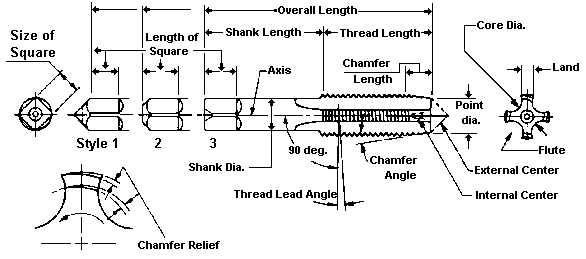
A drill press is a machine that provides precision drilling. It consists of a base, column, table, and head. The head contains the drilling mechanism, which can be adjusted for speed and depth. A drill press is essential for drilling holes with accuracy and consistency.
2. Drill Bits
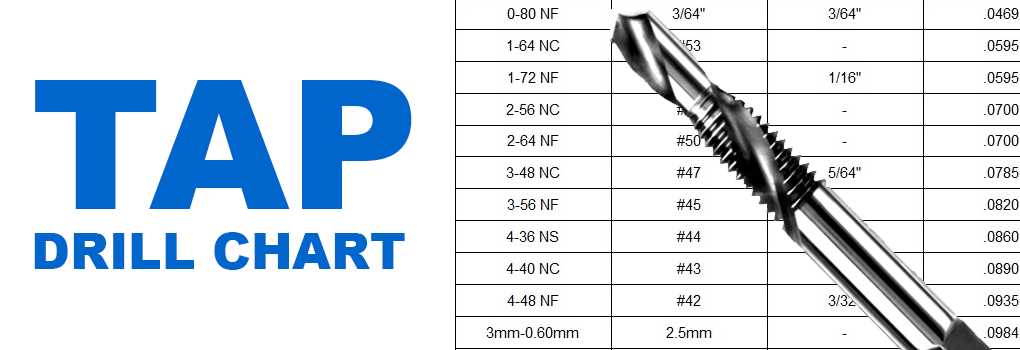
Drill bits are cutting tools used for creating cylindrical holes. They are available in various sizes and types, including twist drill bits, spade bits, and hole saws. The type of drill bit used depends on the material being drilled and the size of the hole required.
3. Taps and Tap Handles
A tap is a tool used to create internal threads in a hole. It is commonly used in conjunction with a tap handle, which provides leverage and control during the tapping process. Taps are available in different thread sizes and types, such as plug taps, bottoming taps, and taper taps.
4. Cutting Fluid
When drilling and tapping, it is important to use cutting fluid to lubricate and cool the cutting tool. Cutting fluid helps prolong the life of the tool and improves the quality of the hole or thread. There are different types of cutting fluids available, such as oils, pastes, and sprays, depending on the specific application.
5. Safety Equipment
Safety should always be a top priority when working with power tools. It is important to wear safety goggles to protect your eyes from flying debris and gloves to protect your hands. Additionally, having a fire extinguisher and a first aid kit nearby is advisable.
With these essential tools, you will be well-equipped to tackle drill and tap projects with confidence and precision. Remember to always follow safety guidelines and exercise caution when using power tools.
Types of Drilling and Tapping
1. Standard Drilling
Standard drilling is the most common type of drilling used in metalworking. It involves creating a hole in a material using a drill bit with a sharp cutting edge. The drill bit is inserted into a drill press or handheld drill and rotated at a high speed while being pressed against the material. Standard drilling is used for a wide range of applications, from drilling holes for screws to creating larger holes for plumbing or electrical work.
2. Countersinking
Countersinking is a type of drilling that is used to create a conical recess in the surface of a material. This recess allows the head of a screw or bolt to sit flush with the surface, providing a smooth and finished appearance. Countersinking is commonly used in woodworking and metalworking applications, where it is important to have a flush surface for aesthetic or functional reasons. Countersink bits are used to create the conical recess, and they come in various sizes to accommodate different screw or bolt sizes.
3. Tapping
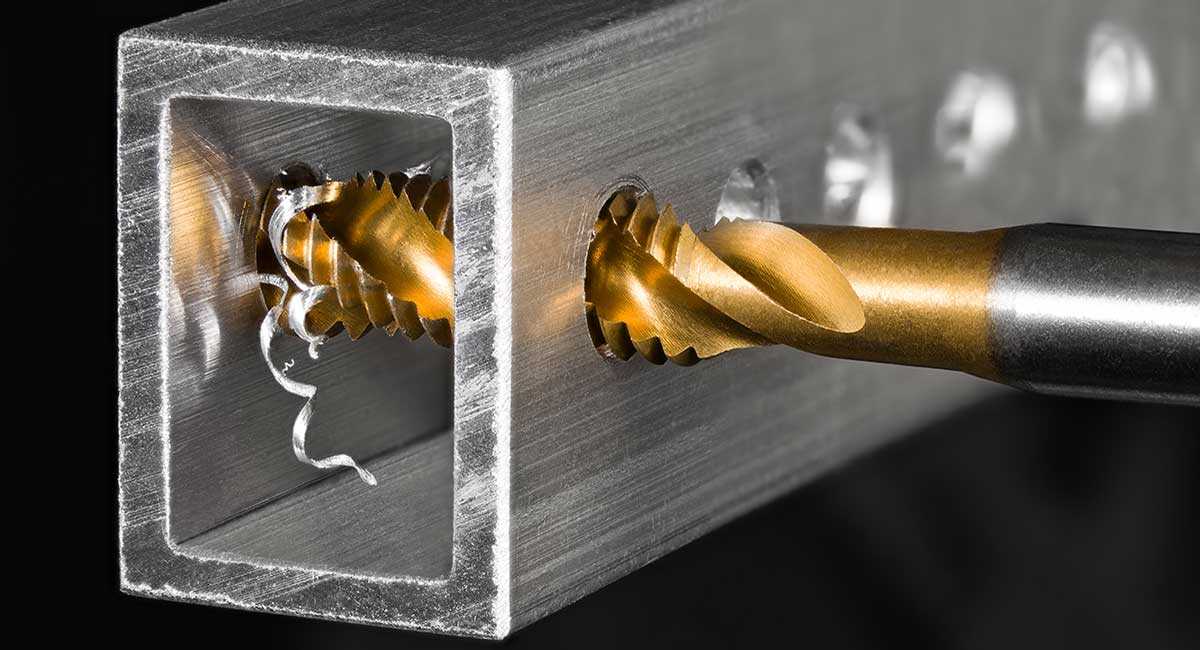
Tapping is a process used to create internal threads in a hole. It is commonly used when a threaded fastener, such as a screw or bolt, needs to be inserted into a material. Tapping can be done by hand using a tap wrench, or it can be done with a tapping machine for larger or more precise applications. The tap is inserted into the hole and twisted to cut the threads. Tapping can be performed on a variety of materials, including metal, plastic, and wood.
4. Reaming
Reaming is a type of drilling that is used to enlarge or finish an existing hole to a more precise diameter. It is commonly used in metalworking applications where a high level of precision is required. Reaming is done using a reamer, which is a cutting tool with multiple flutes or cutting edges. The reamer is inserted into the existing hole and rotated to remove a small amount of material until the desired diameter is achieved. Reaming can improve the surface finish and accuracy of a hole, making it ideal for applications where a tight fit or smooth surface is required.
5. Trepanning
Trepanning is a type of drilling that is used to remove a circular section of material from a larger workpiece. It is commonly used in machining operations to create large holes or to remove material from the center of a cylinder or pipe. Trepanning is done using a special tool called a trepanning tool or trepan. The trepan has a cutting edge on the outer circumference and a hollow center, which allows it to remove a circular section of material. Trepanning can be done with a handheld trepanning tool or with a trepanning machine for larger or more precise applications.
6. Deep Hole Drilling
Deep hole drilling is a drilling process used to create holes with a high length-to-diameter ratio. It is commonly used in applications where a hole needs to be drilled to a significant depth, such as in oil drilling or gun barrel manufacturing. Deep hole drilling requires specialized equipment, including deep hole drilling machines and gun drills. The process involves gradually drilling deeper into the material while removing the chips or waste material. Deep hole drilling can be a challenging process due to the high aspect ratio and the need for coolant to control heat and remove chips effectively.
7. Gun Drilling
Gun drilling is a type of deep hole drilling used specifically for creating accurate and precise holes in metal. It is commonly used in applications where a high level of accuracy and surface finish is required, such as in the automotive and aerospace industries. Gun drilling involves using a specialized drill bit called a gun drill, which has a long, thin profile with multiple flutes for chip removal. Gun drilling machines are used to feed the gun drill into the material at a high speed while coolant is continuously supplied to remove chips and control heat.
Techniques for Drill and Tap
1. Select the Right Tools
Before you start drilling and tapping, it’s important to choose the right tools for the job. A drill press and tap set specifically designed for the material you are working with are essential. Make sure the drill bits and taps are sharp and in good condition to ensure clean and accurate holes.
2. Prepare the Workpiece
Before drilling and tapping, it’s important to prepare the workpiece properly. Ensure that it is securely clamped in place to prevent movement during the drilling and tapping process. Mark the desired location of the hole and use a center punch to create a small indent to guide the drill bit.
3. Drilling
When drilling, start with a smaller pilot hole to guide the larger drill bit. Use a cutting fluid to lubricate the drill bit and reduce friction. Apply steady, even pressure while drilling and periodically withdraw the bit to remove chips and prevent overheating. Drill to the desired depth, taking care not to drill too deep.
4. Tapping
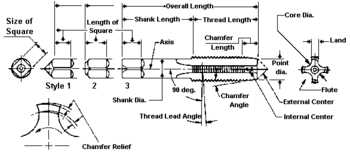
After drilling, use the appropriate tap to create internal threads. Apply cutting fluid to the tap to reduce friction and extend its life. Align the tap perpendicular to the hole and start turning it clockwise with steady pressure. Use a tap handle or wrench to make it easier to turn and maintain control. Turn the tap a few turns, then reverse it a half-turn to break any chips and prevent binding. Continue tapping until the desired thread depth is achieved.
5. Cleaning and Finishing
After tapping, it’s important to clean the workpiece to remove any chips or debris. Use a brush or compressed air to clear the tapped hole and surrounding area. Inspect the threads for any damage or burrs and use a thread file or deburring tool to remove any imperfections. Finally, test the threads with a bolt or screw to ensure a proper fit.
6. Safety Precautions
When working with drills and taps, it’s important to follow proper safety precautions. Always wear safety glasses to protect your eyes from flying chips or debris. Use clamps to secure the workpiece and keep your fingers away from the drilling and tapping area. Take breaks if necessary to prevent overheating of the drill bit or tap. Finally, be aware of your surroundings and keep others at a safe distance.
| Drill Bit Size (inches) | Tap Size (inches) |
|---|---|
| 1/8 | #6 |
| 5/32 | #8 |
| 3/16 | #10 |
| 7/32 | 1/4-20 |
| 1/4 | 1/4-28 |
| 9/32 | 5/16-18 |
| 5/16 | 5/16-24 |
| 3/8 | 3/8-16 |
| 7/16 | 7/16-14 |
| 1/2 | 1/2-13 |
Common Mistakes to Avoid in Drill and Tap
1. Improper Speed and Feed Rate
One common mistake in drill and tap is using an improper speed and feed rate. Using the correct speed and feed rate is crucial for achieving accurate and efficient results. If the speed is too high, it can lead to overheating of the tap, causing it to become dull or break. On the other hand, if the speed is too low, it can result in poor thread quality and excessive tool wear. Similarly, using the wrong feed rate can lead to issues like chip buildup and tool breakage.
2. Incorrect Hole Preparation
Another mistake to avoid is improper hole preparation. Before tapping a hole, it is essential to ensure that the hole is properly drilled and deburred. If the hole is not drilled to the correct size or is not clean and free of burrs, it can lead to misalignment and poor thread quality. It is important to use the appropriate drill size for the tap and follow proper hole preparation techniques to avoid these issues.
3. Insufficient Lubrication
Lack of proper lubrication is another common mistake that can cause problems in drilling and tapping. Insufficient lubrication can lead to heat generation and friction between the tap and the workpiece, resulting in increased tool wear and poor thread quality. To avoid this, it is important to use an appropriate cutting fluid or lubricant during the drilling and tapping process. The lubricant helps to dissipate heat and reduce friction, ensuring smooth and efficient cutting.
4. Incorrect Tap Selection
Choosing the wrong tap for the job is another mistake that should be avoided. Different taps are designed for specific materials and applications, and using the wrong tap can result in poor thread quality, tool breakage, and increased tool wear. It is important to select the correct tap based on factors such as the material being tapped, hole size, and thread type required. Consulting tap selection guides or seeking expert advice can help in choosing the right tap for the specific job.
5. Neglecting Tap Maintenance
Proper tap maintenance is essential for ensuring longevity and optimal performance. Neglecting tap maintenance can lead to dullness, breakage, and poor thread quality. Regularly inspecting taps for wear, sharpening or replacing dull taps, and cleaning them properly can help in preventing these issues. Additionally, using tap holders and proper tapping techniques can also contribute to extending the lifespan of the tap.
6. Lack of Proper Clamping
Insufficient clamping of the workpiece can cause issues in drill and tap operations. When the workpiece is not securely clamped, it can result in vibrations and movement during the drilling and tapping process, leading to inaccurate holes and poor thread quality. Proper clamping techniques, including using suitable clamps or fixtures, are essential for achieving precise and consistent results.
7. Inadequate Operator Training
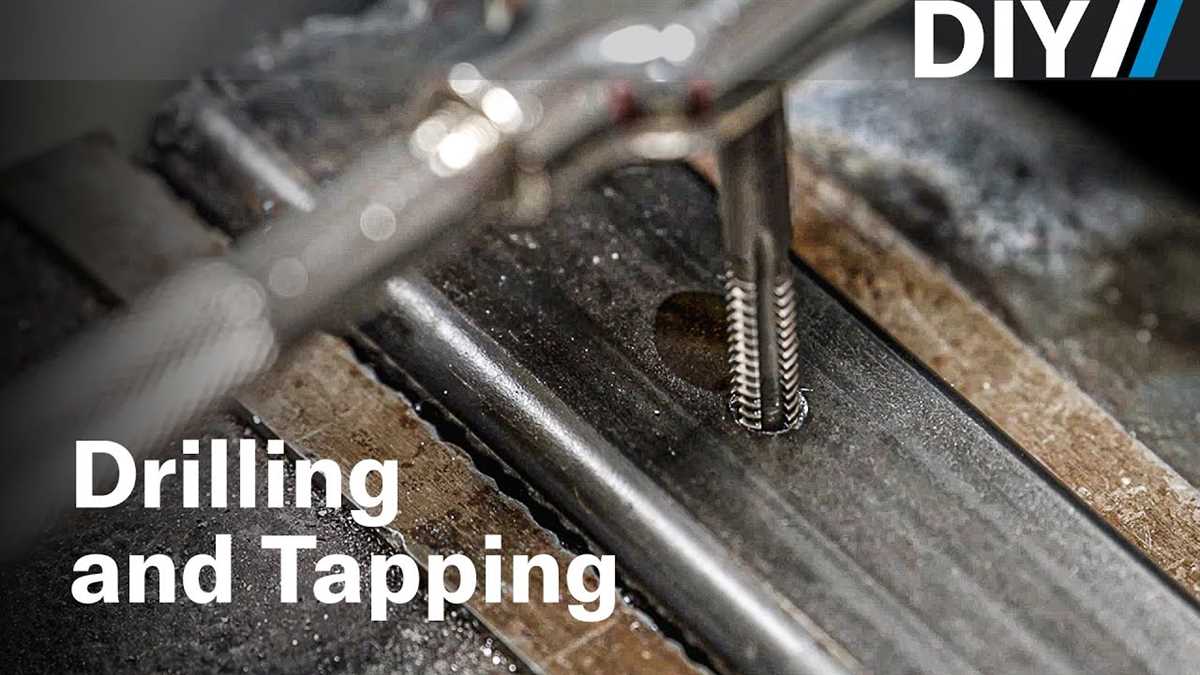
Inadequate operator training can also contribute to mistakes in drill and tap operations. Lack of knowledge about proper drilling and tapping techniques, as well as the use of tools and equipment, can lead to errors and subpar results. Providing comprehensive training to operators can help in preventing these mistakes and ensuring efficient and accurate drill and tap operations.
By avoiding these common mistakes, you can improve the quality and efficiency of your drill and tap operations. Taking the time to understand and address these issues can go a long way in achieving successful outcomes in your machining projects.
Safety Precautions for Drill and Tap
1. Wear the Proper Personal Protective Equipment (PPE)
Before you begin drilling and tapping, it is essential to wear the appropriate personal protective equipment (PPE) to ensure your safety. The following PPE is recommended:
- Safety glasses or goggles to protect your eyes from flying debris
- Ear protection, such as earplugs or earmuffs, to guard against noise pollution
- Gloves to protect your hands from cuts or abrasions
- Work boots or sturdy closed-toe shoes to shield your feet
2. Inspect the Work Area
Before drilling and tapping, it is crucial to inspect the work area to identify potential hazards and take the necessary precautions. Some important steps to follow include:
- Ensure the work area is well-lit and adequately ventilated
- Clear any clutter or debris that could pose a tripping or slipping hazard
- Check for any electrical wires or pipes that may be hidden within the walls or floor
3. Use the Correct Tools and Equipment
Using the proper tools and equipment is essential for safe and efficient drilling and tapping. Here are some guidelines to follow:
- Ensure the drill bits and taps are sharp and in good condition for optimal performance
- Use the appropriate drill bit size and tap for the material you are working with
- Make sure the drill and tap are securely fastened in the chuck or handle
- Avoid using damaged or worn-out tools
4. Follow Proper Operating Procedures
To ensure your safety and the success of your drilling and tapping project, it is crucial to follow the correct operating procedures. Some important points to remember include:
- Read and understand the manufacturer’s instructions and safety guidelines
- Start drilling and tapping at a slow speed and gradually increase the speed as needed
- Apply gentle and steady pressure while drilling and tapping
- Keep your hands and fingers away from the rotating drill bit or tap
5. Be Mindful of Sparks and Debris
During the drilling and tapping process, sparks and debris may be generated. It is vital to take precautions to prevent injury:
- Ensure there are no flammable materials or liquids nearby that could ignite from sparks
- Wear appropriate clothing to protect your skin from hot sparks and flying debris
6. Clean and Maintain Tools
Keeping your tools clean and well-maintained is important for both safety and performance. Some maintenance tips include:
- Regularly check and tighten any loose screws or connections on the drill and tap
- Clean the drill bits and taps after each use to remove any debris or buildup
- Store your tools in a dry and secure place to prevent damage and rust
Conclusion
By following these safety precautions, you can minimize the risk of accidents and injuries while drilling and tapping. Remember to always prioritize safety and take the necessary steps to protect yourself and others in the work area.
FAQ:
What are the different types of drills?
The different types of drills include twist drills, center drills, spotting drills, step drills, and countersink drills.
What is a tap used for?
A tap is used to create internal threads in a hole, allowing a screw or bolt to be threaded into the hole.
What types of taps are available?
There are various types of taps available, including taper taps, plug taps, and bottoming taps.
How do you choose the right drill size for tapping?
The right drill size for tapping is determined by the size of the hole and the type of tap being used. It is important to refer to a tap drill chart to determine the correct drill size.
What are some common tips for drilling and tapping?
Some common tips for drilling and tapping include using the appropriate cutting fluid for lubrication, maintaining a steady drilling speed, and using appropriate pressure when tapping to avoid breaking the tap.
What are the steps to tap a hole?
The steps to tap a hole involve drilling a hole to the correct size, applying cutting fluid to the tap, aligning the tap with the hole, and turning the tap clockwise to thread it into the hole.
What are some common problems that can occur when drilling and tapping?
Some common problems that can occur when drilling and tapping include tap breakage, improper hole sizing, and incorrect tap alignment.
Video:











